
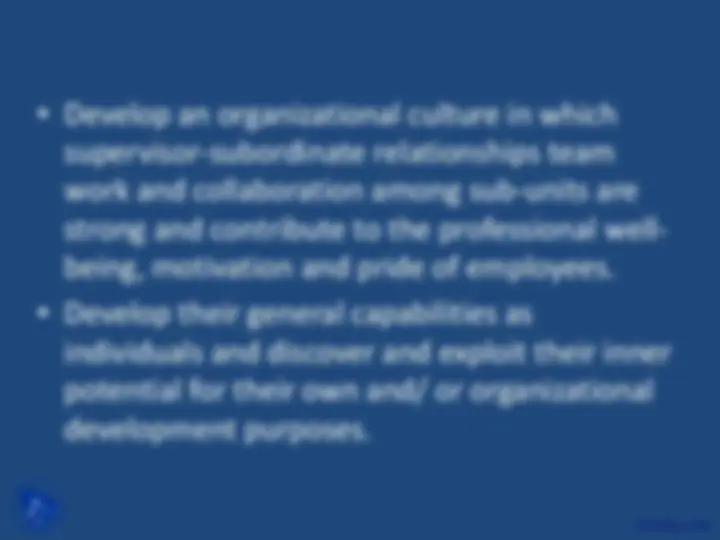
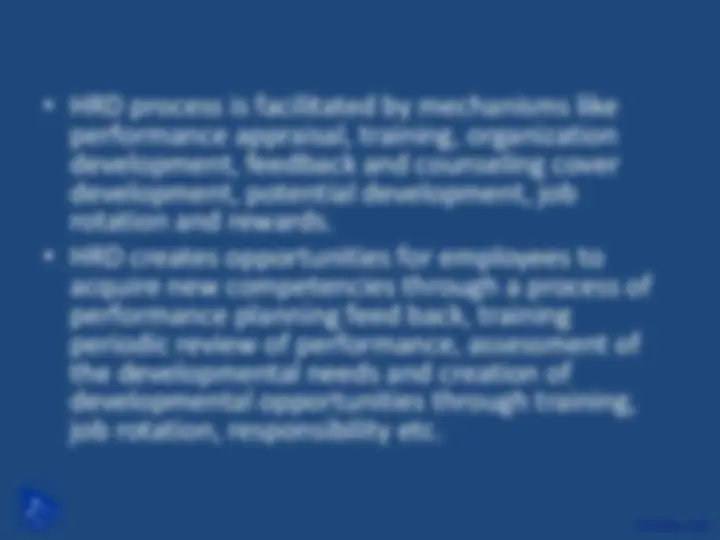
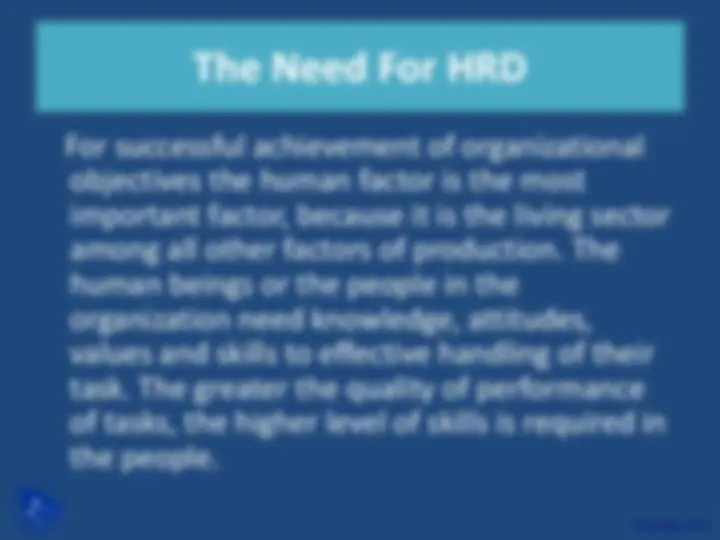
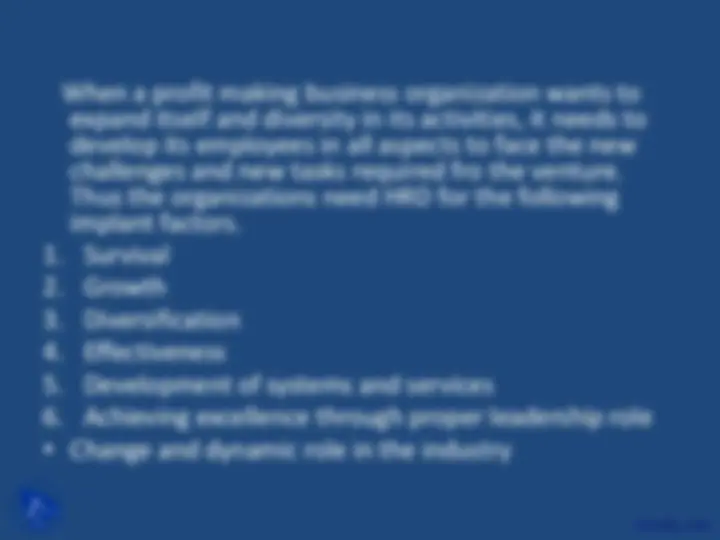
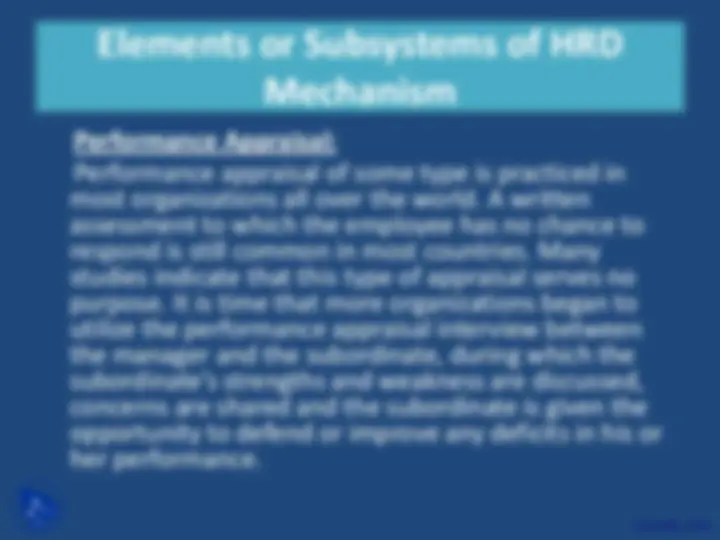
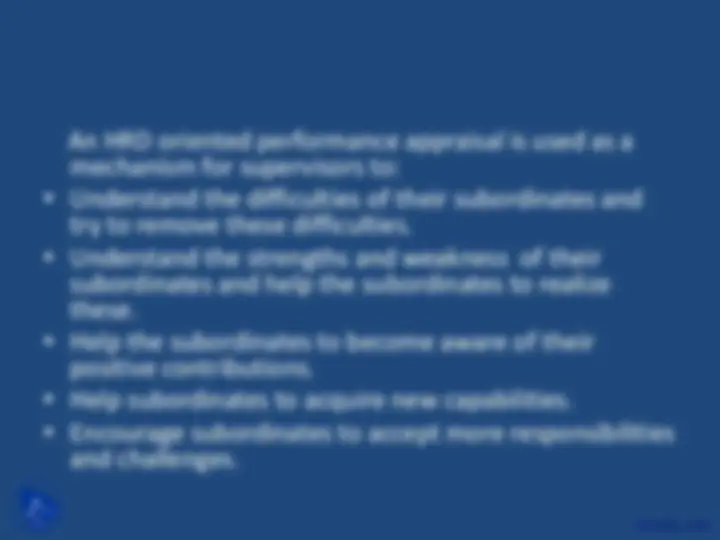
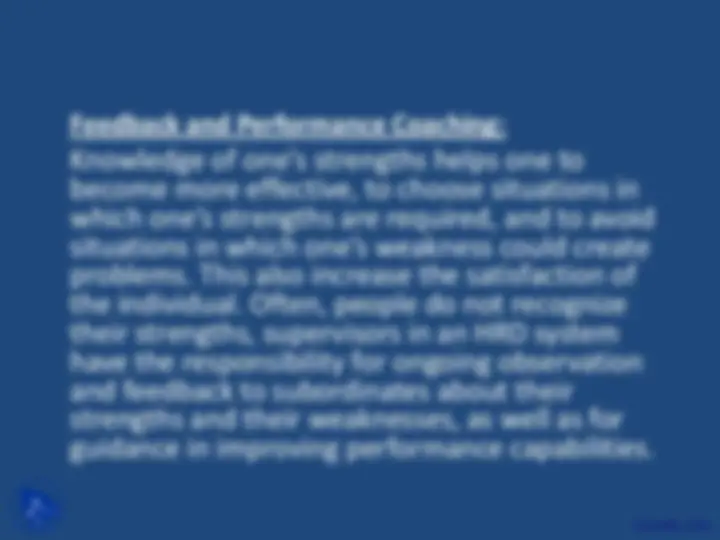
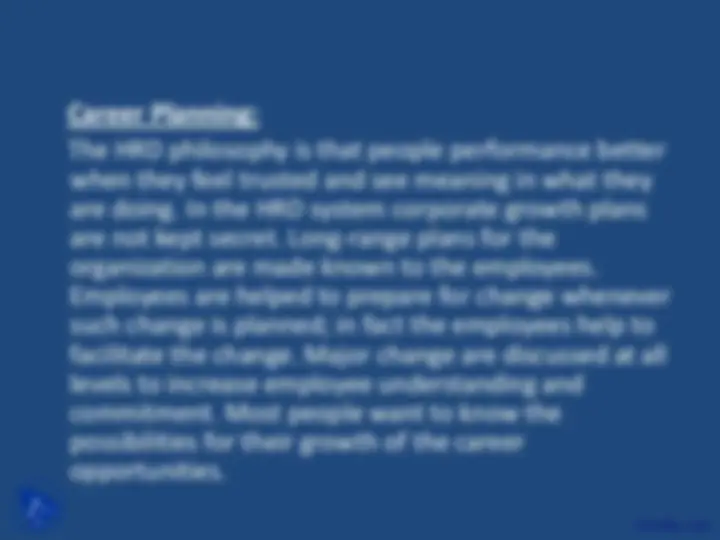
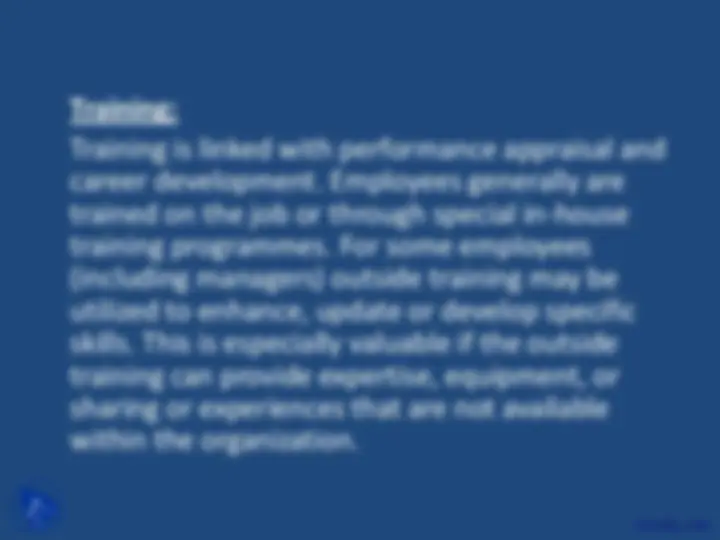
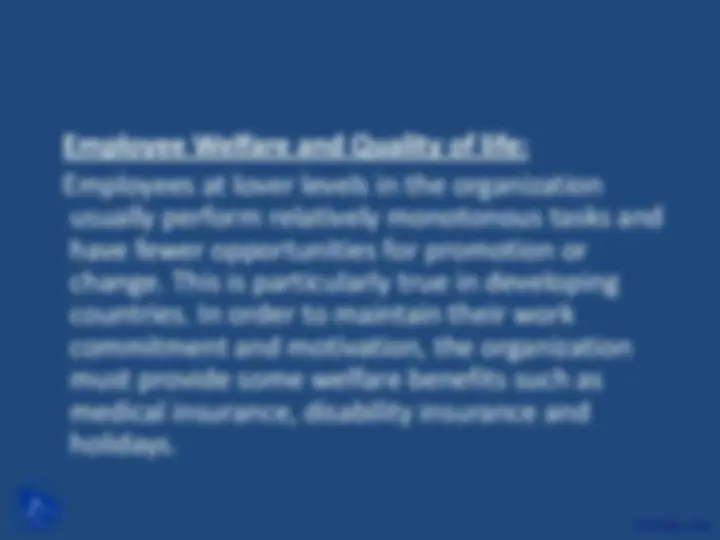
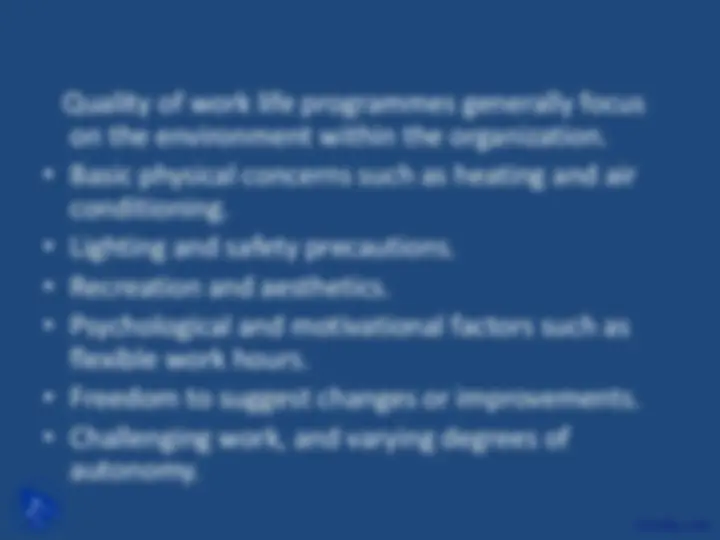
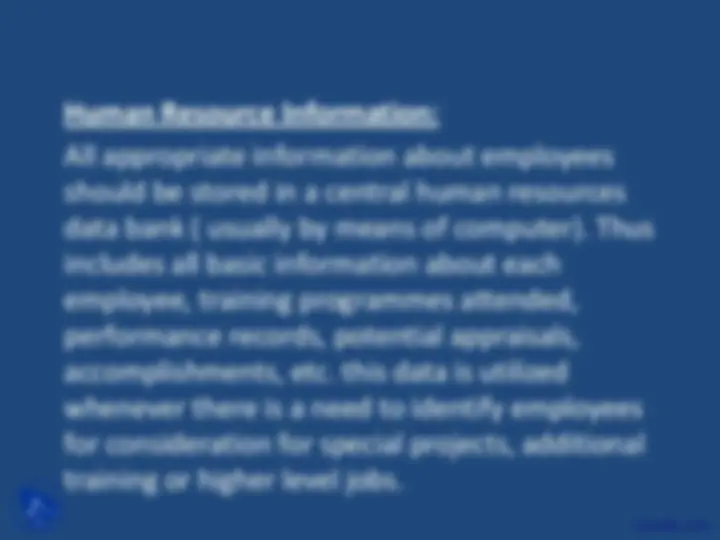
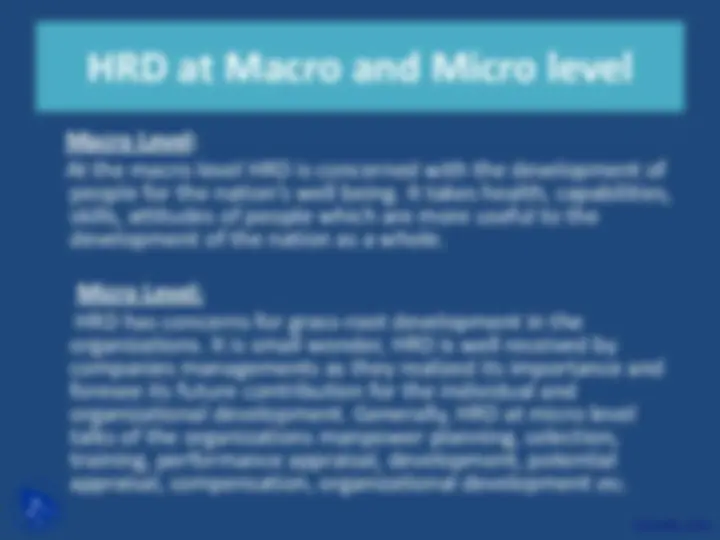
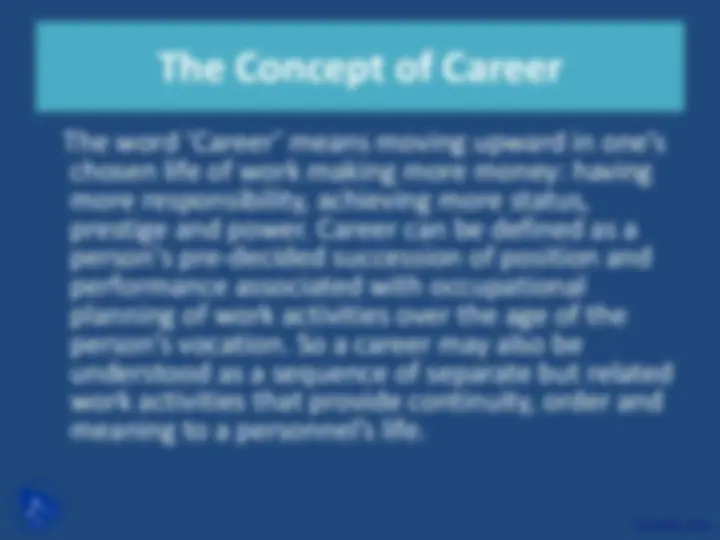
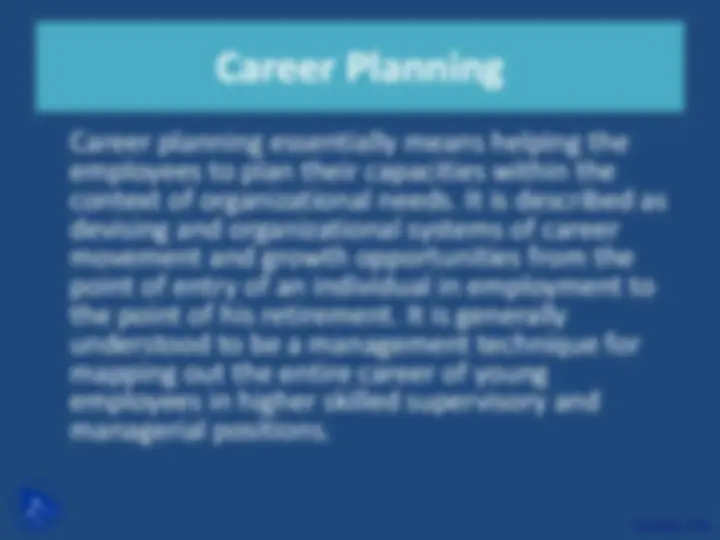
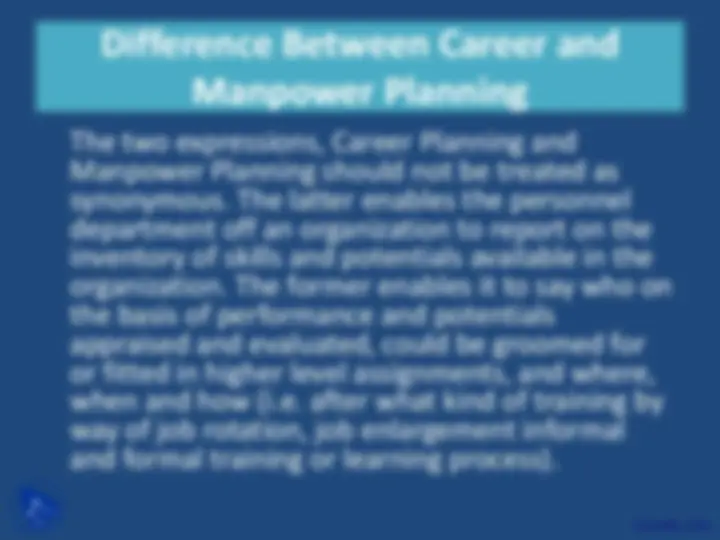
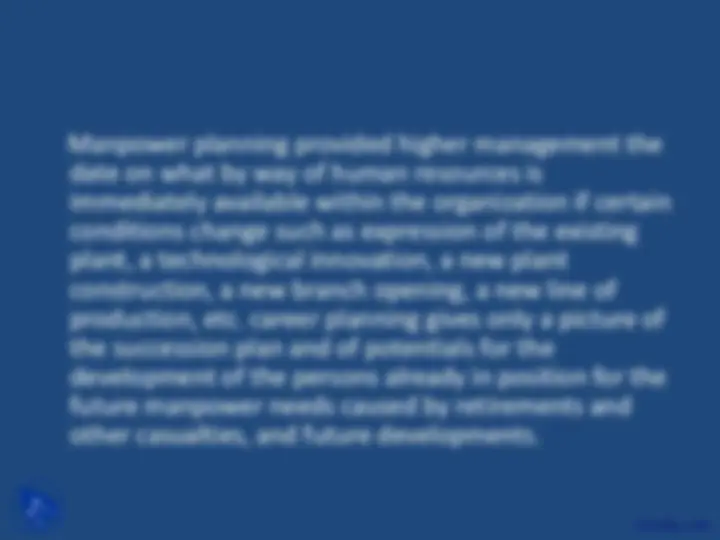
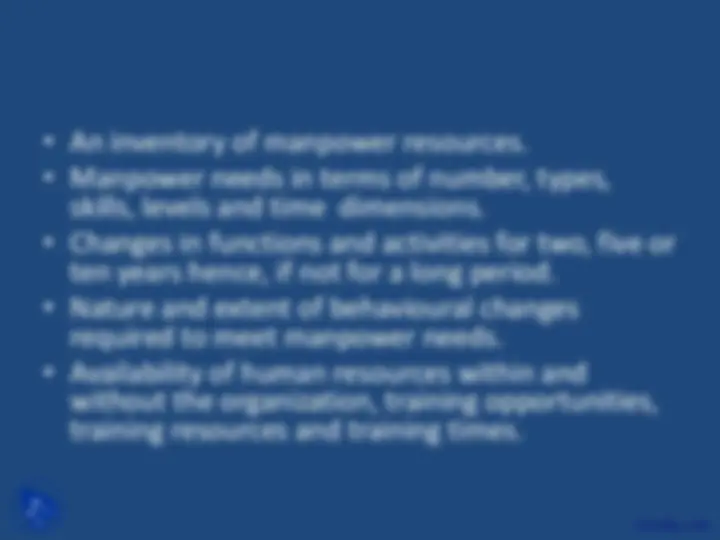
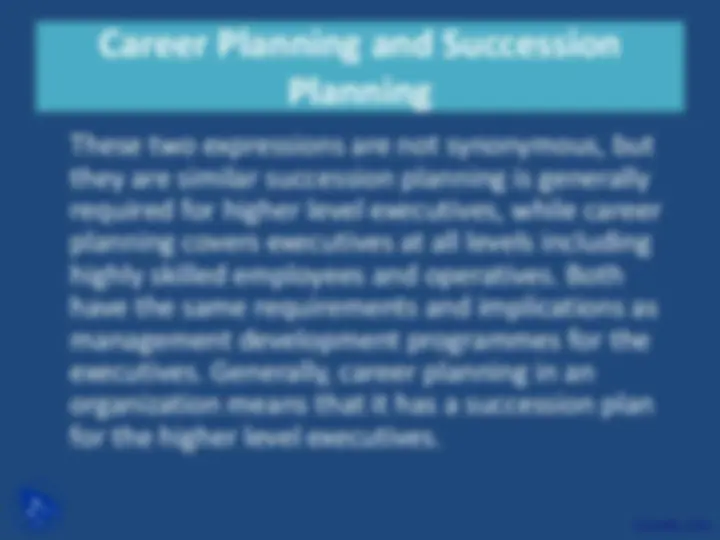
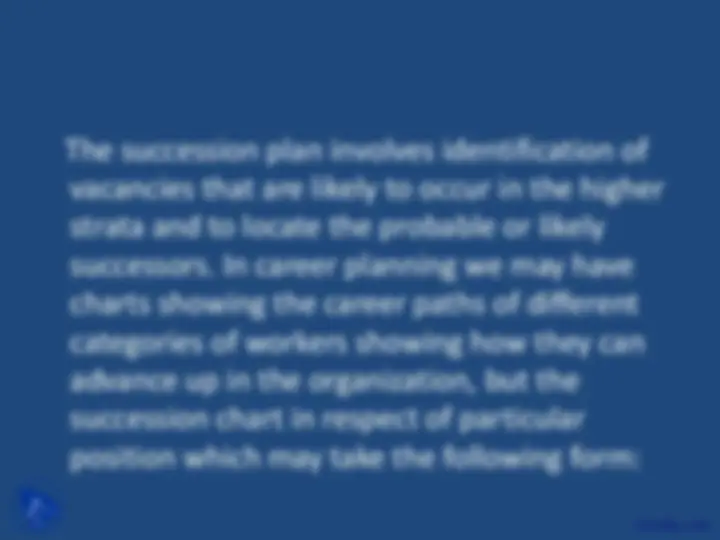
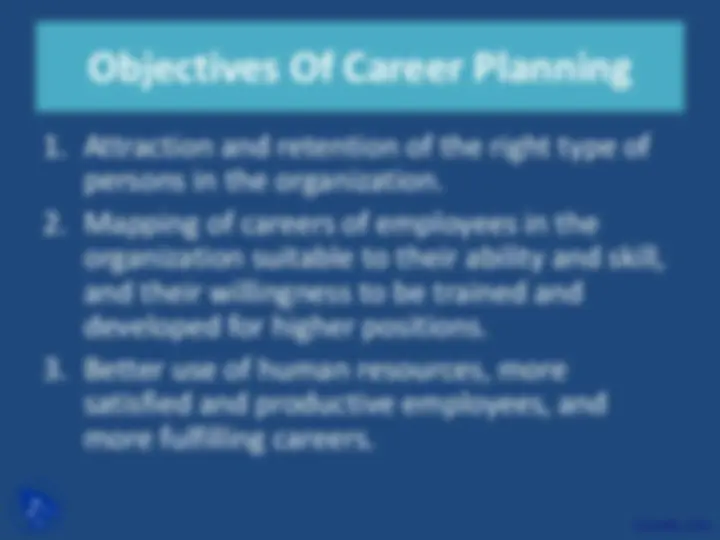
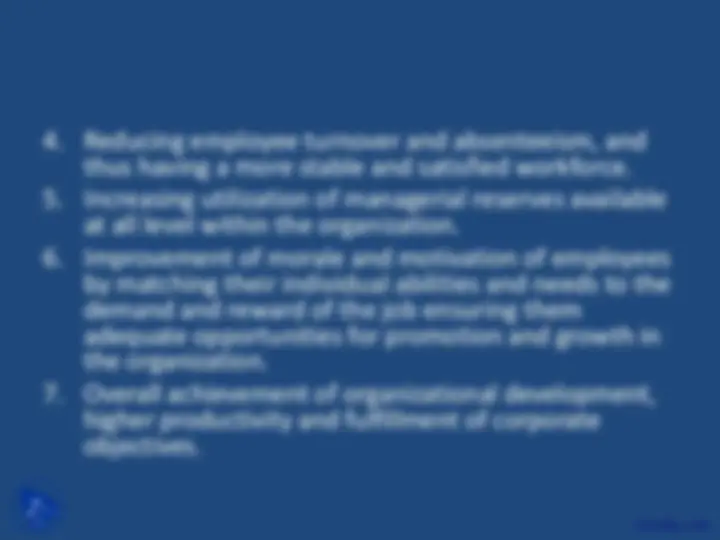
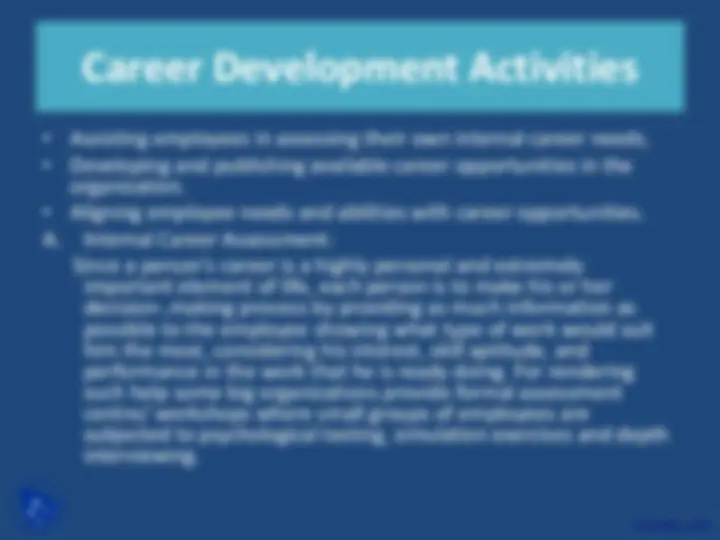
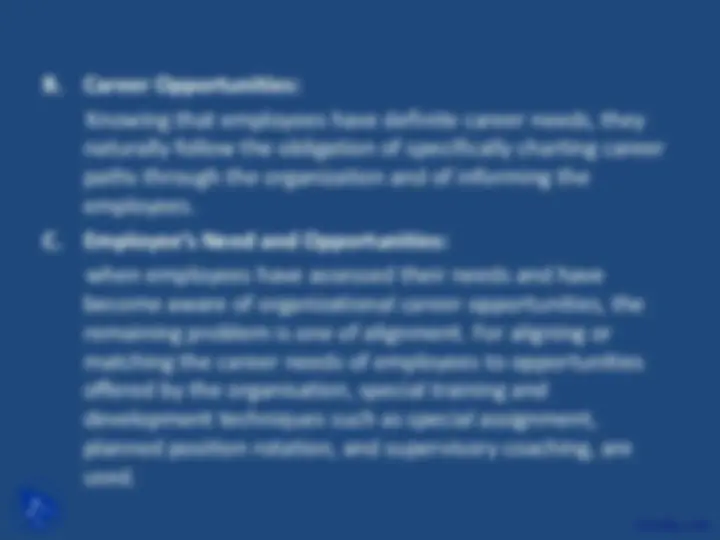
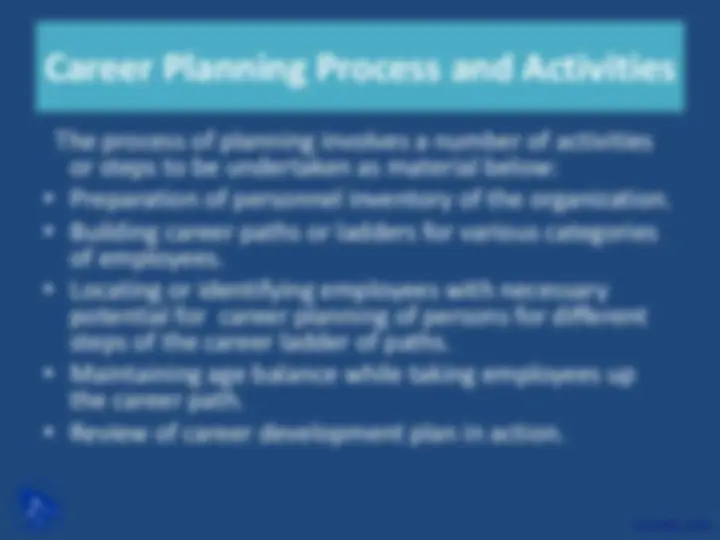
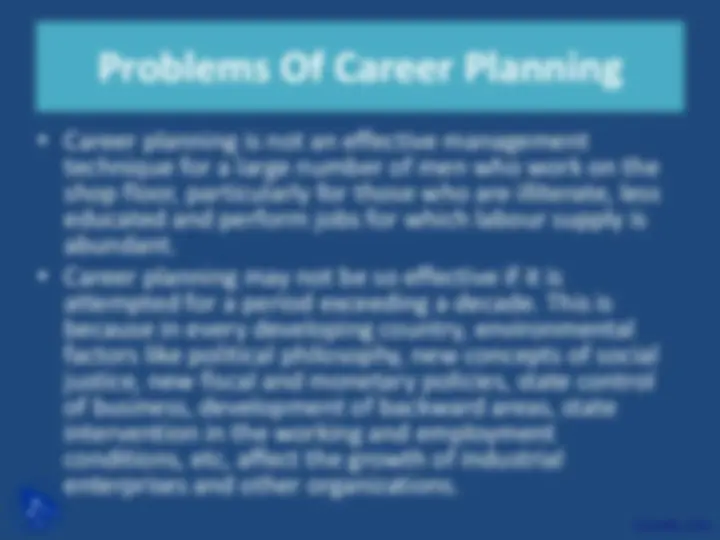
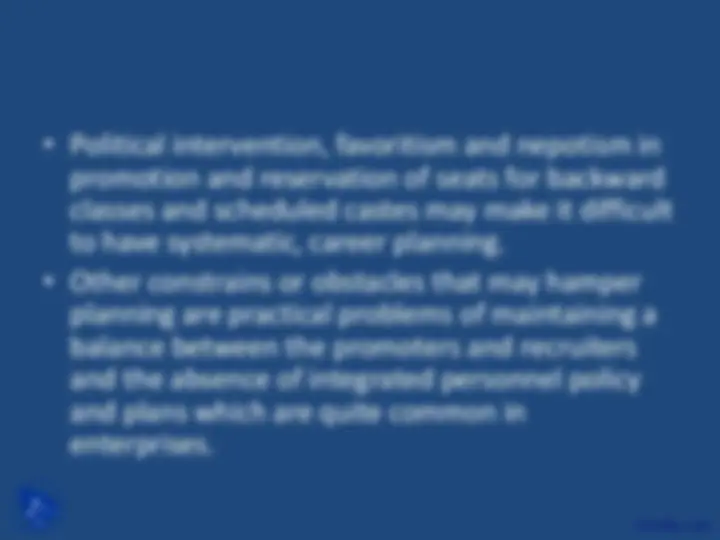
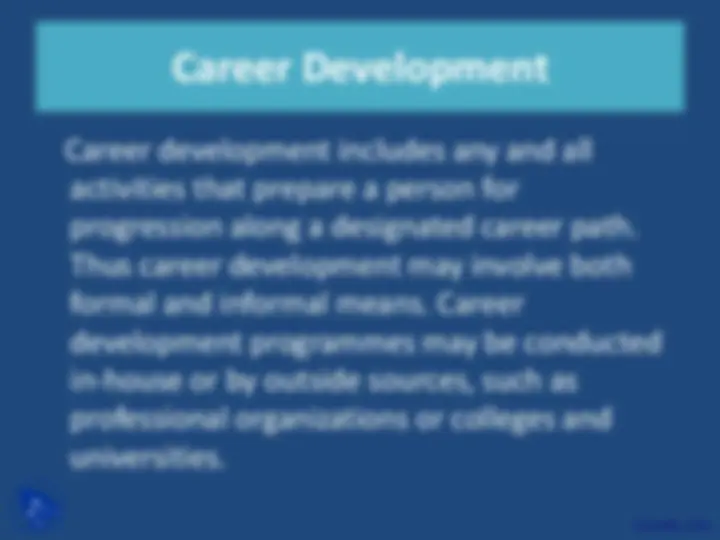
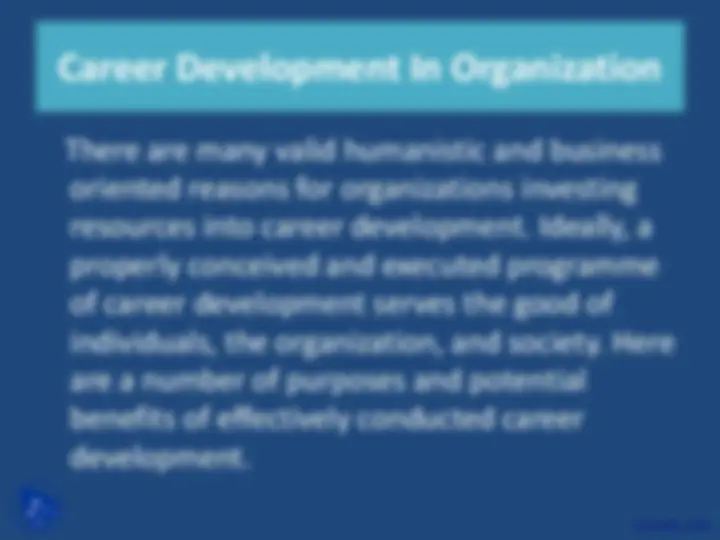
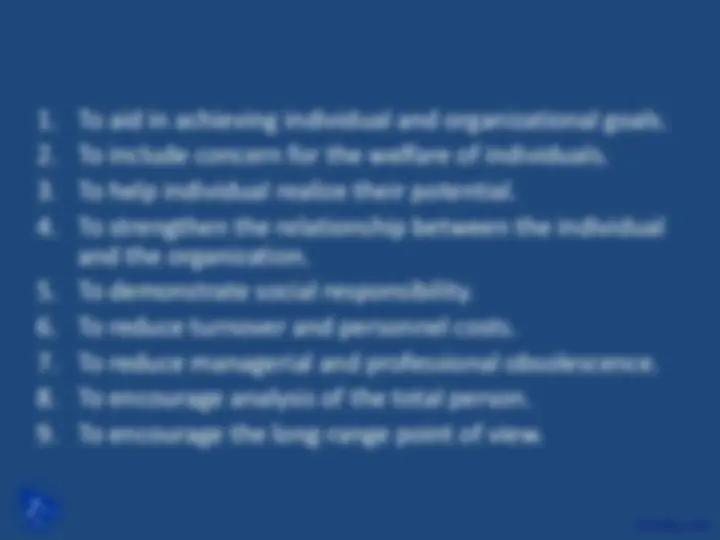
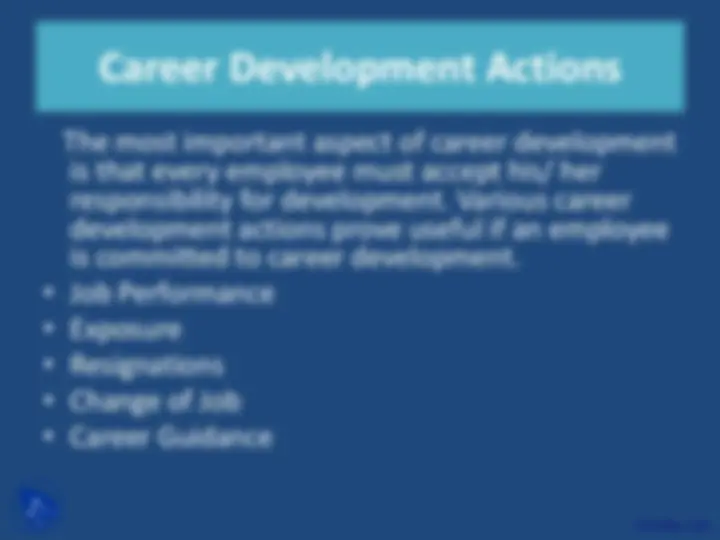
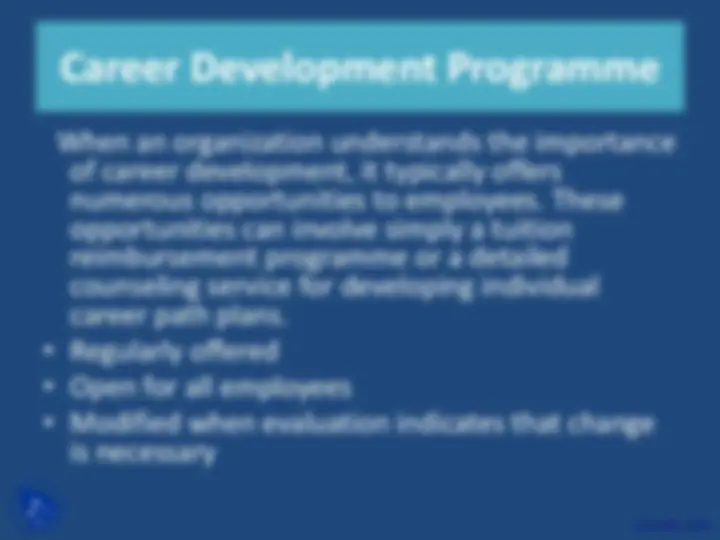
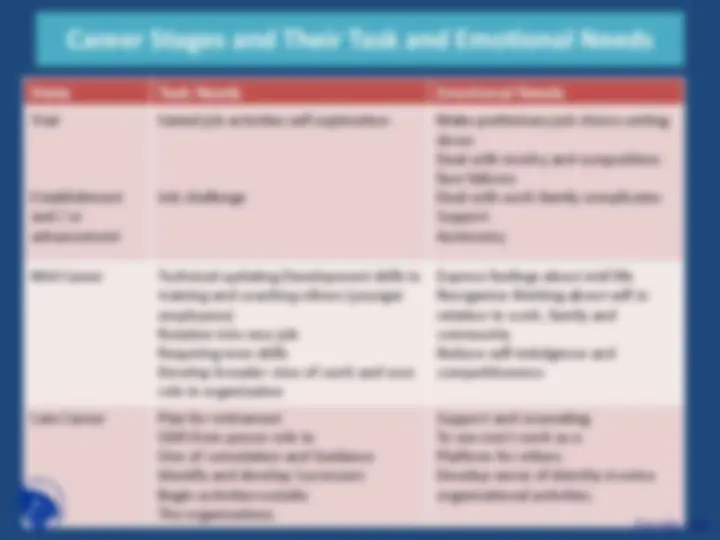
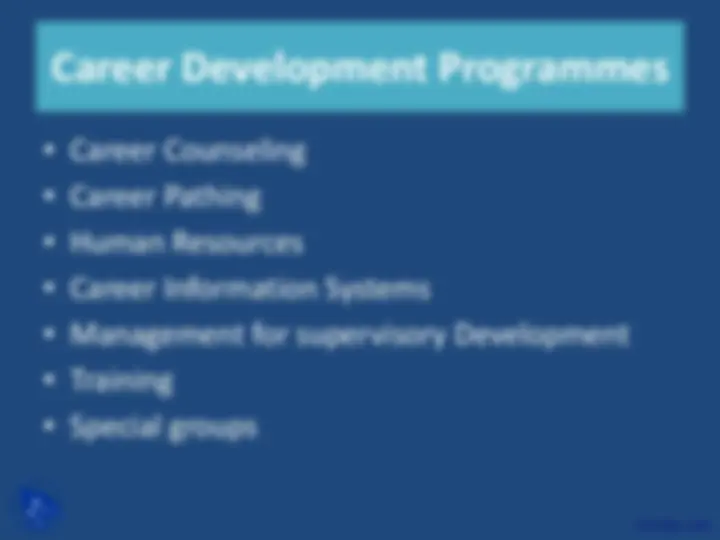


Study with the several resources on Docsity

Earn points by helping other students or get them with a premium plan


Prepare for your exams
Study with the several resources on Docsity

Earn points to download
Earn points by helping other students or get them with a premium plan
Community
Ask the community for help and clear up your study doubts
Discover the best universities in your country according to Docsity users
Free resources
Download our free guides on studying techniques, anxiety management strategies, and thesis advice from Docsity tutors
This lecture was delivered by Pooja Rathore at Anand Agricultural University for Training and Development course. It includes: Human, Resource, Development, Career, Planning, HRD, Development, Future, Roles, Organizational, Culture
Typology: Slides
1 / 42

This page cannot be seen from the preview
Don't miss anything!



































Human Resource Development:
The human competency development has become an essential prerequisite for long run growth and development of the organization which develops the economy of the nation. So, many organizations have step up new departments known as Human Resource Development (HRD) Departments which symbolize the recognition of importance of people’s competency development. Some organizations like service sector and public sector undertakings are taking HRD a synonymous with training.
When a profit making business organization wants to expand itself and diversity in its activities, it needs to develop its employees in all aspects to face the new challenges and new tasks required fro the venture. Thus the organizations need HRD for the following implant factors.
An HRD oriented performance appraisal is used as a mechanism for supervisors to:
Feedback and Performance Coaching:
Knowledge of one’s strengths helps one to become more effective, to choose situations in which one’s strengths are required, and to avoid situations in which one’s weakness could create problems. This also increase the satisfaction of the individual. Often, people do not recognize their strengths, supervisors in an HRD system have the responsibility for ongoing observation and feedback to subordinates about their strengths and their weaknesses, as well as for guidance in improving performance capabilities.
Career Planning:
The HRD philosophy is that people performance better when they feel trusted and see meaning in what they are doing. In the HRD system corporate growth plans are not kept secret. Long-range plans for the organization are made known to the employees. Employees are helped to prepare for change whenever such change is planned; in fact the employees help to facilitate the change. Major change are discussed at all levels to increase employee understanding and commitment. Most people want to know the possibilities for their growth of the career opportunities.
Rewards:
Rewarding employee performance and behavior is
an important part of HRD. Appropriate rewards not only recognize and motivate employees, but also communicate the organization’s values to the employees. In HRD systems, innovations and use of capabilities are rewarded in order to encourage the acquisition and application of positive attitude and skills. Typically rewards include certificates of appreciation, newsletter, announcements and increase in salary, bonus, special privileges and desired training.
Quality of work life programmes generally focus on the environment within the organization.
conditioning.
flexible work hours.
autonomy.
Human Resource Information:
All appropriate information about employees
should be stored in a central human resources
data bank ( usually by means of computer). Thus
includes all basic information about each
employee, training programmes attended,
performance records, potential appraisals,
accomplishments, etc. this data is utilized
whenever there is a need to identify employees
for consideration for special projects, additional
training or higher level jobs.